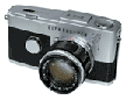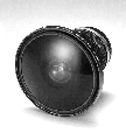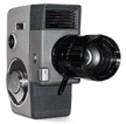
olympus lineage
headings marked *** are complete

olympus lineage headings marked *** are complete |

Folding Cameras 1936 to 1956 |
FOLDING CAMERAS ***Feb 2005*** IN BRIEF - Post war folders such as the Chrome Six Model IIIB are quite common. Strangely, folders from the last years of production are much less common. Cameras from the immediate post war occupied period are difficult to find. Pre-war cameras are rarer still. The earliest models from Olympus, the Semi models 1 (with imported COMPUR) & Semi model 2 (with Japanese made KOHO) are extremely rare. The icon here is of a 1936 Semi with Compur shutter, one of two known extant.
|

'35' Series 1947 to present |
IN BRIEF - You will notice I have put 35 in inverted commas. This is to denote that the earliest in this series are not 35mm format but the 24mm x 32mm Nippon format popular in Japan. By 1949 the occupying forces decreed that all exports had to comply with American standards so only true 35mm format cameras could be exported. In addition, along with Jean-Paul Francesch, I include the famed Olympus Standard with this series as, frankly, it doesn't sit anywhere else. The CatsPaw cameras come in three guises, all of which are rare, but the first and last CatsPaw are extremely rare.
|

TLR 1952 to 1957 |
TWIN LENS REFLEX***August 2005*** updated May 2006 IN BRIEF - Considered by many collectors as the epitome of 'classic' cameras, TLR's are collected by many, not only Olympus devotees. This makes it more difficult to find what are pretty rare cameras anyway. Contrary to certain published wisdom these cameras are far from being 'common'. I've been collecting for 20 years and now have 4 out of the six made. I don't expect to ever see the missing models, the very first OlympusFlex B1 and the rare B2 with 3.5 taking lens. Many reference books do not even list these, and if they do they show both the wrong camera and description. |

Viewfinder Pen 1959 to 1985 |
VIEWFINDER PEN***March 2005*** IN BRIEF - One of the favourite collectable series in the whole Olympus stable. Why? Any number of reasons, not least of all that should you ever achieve the full set, they will comfortably sit on just a couple of shelves. These delightful half-frame cameras have a lot going for them. Small. neat, beautifully designed and well made and of course eminently usable. This camera represents the start of Maitani design influence within Olympus, lasting until 1993 when he retired.
|

SLR Pen 1963 to 1971 |
SLR HALF-FRAME PEN***March 2005*** IN BRIEF - Another popular collecting line is Yoshihisa Maitani's second major contribution to the fortunes of Olympus (and precursor to what some would say his greatest achievement - OM) is the incomparable Pen F/FT/FV line. The first system camera for half-frame boasted its own range of specially designed lenses and some impressive accessories. For collectors this line is challenging for although the bodies are relatively common, some of the lenses are incredibly rare and command extremely high prices; you have been warned.
|

FTL 35mm Full frame 1971 to 1972 |
IN BRIEF - Thought by many to be 'badge engineered' for Olympus by another Japanese manufacturer as a stop gap between the demise of Pen FT and introduction of M/OM. Research and questions posed to Mr Maitani reveal that the FTL and its 6 lenses were manufactured by Olympus and not bought in, as suspected. The cameras designer is unknown. FTL Zuiko screw fit lenses (with a unique locking button) soon achieved much acclaim from contemporary testers; one such tester still maintaining FTL Zuikos are superior to OM. My limited experience with them does not contradict his opinion. Bodies are quite common, lenses less so, and system accessories are quite rare.
|

M/OM 35mm SLR Bodies 1972 to 2002 |
IN BRIEF - M1, introduced at Photokina in 1972 raised both eyebrows and hackles. Leitz immediately pointed out that Olympus were in breach of Trade Mark law using M1, already registered by them. Immediately re-badged as the OM system this fabulous 35mm SLR set the standard for years to come. Through various guises it remained in production for 30 years - an amazing achievement for designer Yoshihisa Maitani. This section deals with single and multiple digit OM bodies (1,2,3,4,10,20,30,40,101,707,2000 & all derivatives)
|

M/OM 35mm SLR Lenses 1972 to 2003 |
IN BRIEF - Many have been collecting/using M and OM system lenses for years, myself included. Zuiko lenses enjoy a wonderful reputation for sharpness and contrast, often being in the same basket as Leica and Nikon with lens testers. Are they as good as we are led to believe? Do they really justify the exorbitant prices they command both when new and now secondhand? Though they have slipped a little in the digital era will they ever be cheap glass?
|

Medical Cameras |
IN BRIEF - Olympus roots are in microscope making. It seems pertinent that once the company established a credible Camera Division that the two technologies should contribute to the overall corporate profile. In most competent lineages Olympus produced cameras for microscopy work. Some consider medical cameras to be collectable. Personally I don't wholly agree, however it would be churlish to ignore such contributions to world health. There is a very limited amount of information on this site.
|

Cine Cameras & paraphernalia |
IN BRIEF - Like most Japanese makers, Olympus dipped the corporate toe into the cine world as early as 1958. Never achieving greatness their contributions stayed well within 8mm confines with no Super 8 or 16mm offerings. This section shows all such offerings with notes of lenses supplied to other cine makers such as Elmo.
|

Transparent Cameras |
IN BRIEF - Considered by some to be especially collectable, transparent cameras were made for distribution throughout the repairing franchisers so the repairmen could comment before the camera went into full production. Made in very limited numbers they represent an interesting addition to any collection. Do not confuse these with other makers 'useable' transparent cameras. It is not known how many models were made with tranparent bodies, nor the exact number per model. This practice lasted only a few years around 1985~95.
|

E-1 4/3rds Digital SLR 2003 to present |
IN BRIEF - You might think it strange that I list E-1 digital SLR cameras in the classic or collectable lineage. Many years of Olympus collecting tells me that these may well be classics of the future. Rubbish? Who would have thought Pen F would prove so collectable when in the early 70's you couldn't give them away? Digital half-frame collectables? We'll see. However as a 'user' system 4/3rd's goes from strength to strength as you can see here.
|
|
HOME |
INTRO |
BOOKS |
OLYMPUS CIRCLE |
QUEST |
TOC MEMBERS |
GALLERIES
|
| Posted 2004/12/12 | Copyright © 2004 John Foster |